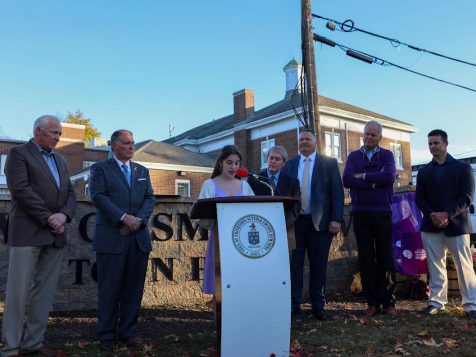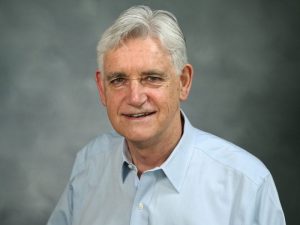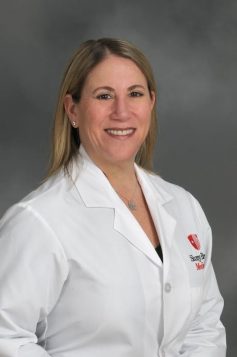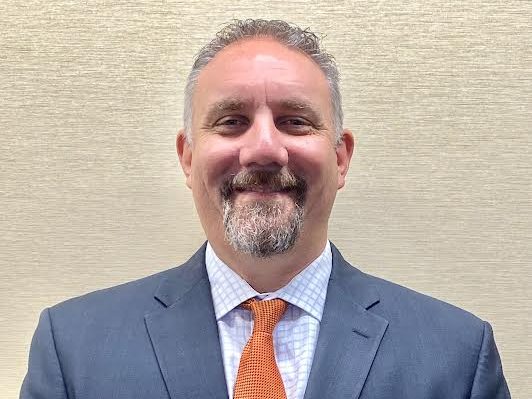By Daniel Dunaief
In the midst of the pandemic, a new health effort started at Stony Brook Medicine, the medical enterprise of Stony Brook University, that is saving lives and paying other important dividends.

Led by the Director of the Stony Brook Center for Global Health Dr. Sierra Washington, the university’s initiative has improved the outcomes for many people in Mozambique, particularly pregnant mothers, over the last few years.
The maternal mortality rate at Hospital Central de Maputo was 544 per 100,000 births when Washington, who was trained at Harvard Medical School and is an obstetrician/ gynecologist, joined Stony Brook. That’s about 39 times the rate in Suffolk County, which is about 14 per 100,000 live births.
For a doctor in Mozambique, “you’re losing a mother every week,” Washington said.
When mothers die, the rates of infant and child mortality increases as well.
The rate of maternal mortality by 2023 dropped to 365 per 100,000 live births.
“That’s a testament to our sustained collaboration and the work we’ve done,” Washington said, but “it’s still way too high.”
She is aiming for a 50 percent reduction within the next five years.
The benefit for pregnant mothers extends beyond one area, as residents in obstetrics and gynecology train at Hospital Central de Maputo before they are posted to other hospitals across the nation.
Stony Brook introduced numerous ways to improve outcomes for expectant mothers. Washington introduced education and skills building and created and stocked single use medication kits for quick evaluation and treatment of a hemorrhage or infection, built systems to perform emergency C sections in a timely way and built systems to resuscitate the mother.
In addition to obstetrics and gynecology, Stony Brook has brought expertise and equipment in emergency medicine and general surgery to Mozambique.
“It’s a bilateral exchange,” said Washington. “We send learners in both directions.”
Medical trainees travel to Stony Brook, where they return with ideas and implement them in Mozambique.
So far, 11 faculty and four residents, meanwhile, have traveled over 8,000 miles to the southeastern part of the African continent to Mozambique to teach.
Additionally, the Department of Obstetrics and Gynecology at Stony Brook gives resident lectures every Wednesday over zoom to residents in Mozambique. Washington would like to duplicate that in emergency medicine and surgery.
“Almost everyone who comes here once wants to come back,” said Washington.
Indeed, this type of program can help recruit and retain talented medical care professionals eager to contribute to the world as global citizens.
“We definitely feature the program on interview days in departments that are engaged” in this global health effort, said Washington.
Mission

Washington explained that the mission of the program is to advance global health equity, beginning in Mozambique, by building capacity for care, education and research.
Collaborators in the two countries are working on five ongoing research projects on women’s health.
The framework she has used to build the system comes from the late Dr. Paul Farmer, who was a medical anthropologist at Harvard University.
Farmer coined the five S’s of global health, which include stuff, staff, skills, space and systems.
The stuff includes critical equipment and supplies, essential medicines, sutures, gloves and other products.
“These are the things Americans take for granted when they walk through the door” at a hospital or a medical practice, Washington said.
The Global Health Equity program currently has one other full-time staff member besides Washington who is an administrator.
She would like to recruit and retain a field director in emergency medicine and surgery in the next calendar year.
Additionally, Stony Brook Health would like to add expertise in nursing, pediatrics and anesthesiology, which she considers part of phase two.
The third phase involves bringing in the kinds of systems that help make hospitals run effectively in areas such as biomedical engineering, computer science and environmental science.
These experts could help ensure that a blood pressure cuff is functioning, that the ultrasound works, the lights turn on, and outlets provide power.
Africa is where people “send second-hand medical equipment that goes to die,” Washington explained. “Without properly trained and equipped maintenance departments and without industry service contracts, there is no way to repair most equipment.”
Financial reality
The Mozambique effort has been operating on what Washington described as a “shoestring budget” of around $100,000 per year.
The system leans on grant money, the good will of the hospital center, and on private donors.
Washington would like to raise $1 million over the next year, which, she suggested, would pay dividends in the health of the population.
Additional funding would help Washington develop a tool kit to reduce maternal mortality for the country.
During their eight week visits, Stony Brook’s visiting residents have stayed with Washington when they travel to Mozambique because the university cannot afford faculty/ resident housing.
“We would love to have an eponymous donation to be able to have a Stony Brook campus here, which would include short term housing, flexible learning space and meeting space,” she explained in an email.
Since the program inception, Stony Brook has raised about $500,000 in cash or in kind. The program currently has a balance of $165,000 that will last for one more year.
Washington is passionate about and committed to the effort, which she describe as “her life’s work.”



















